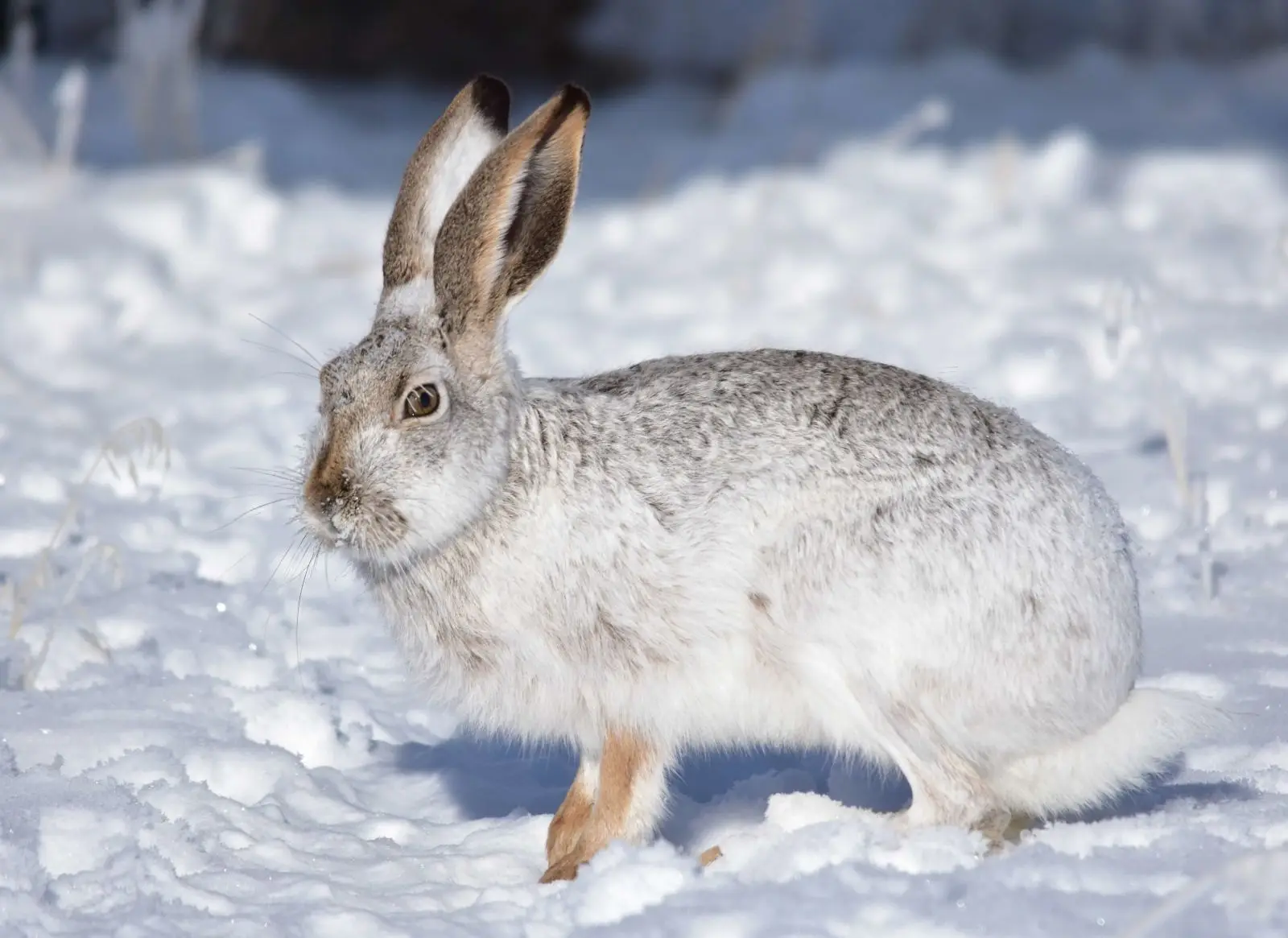| Scientific Name Lepus townsendii Size 6 to 10 pounds Habitat Open grasslands and sagebrush plains Status Oregon listing: Sensitive |
About
The white-tailed jackrabbit has an expansive range in North America, spanning across southern Canada and the northern United States from the west coast to the Great Lakes. These jackrabbits live in open grasslands and sagebrush plains, and are sometimes found in coniferous forests and subalpine meadows. They are particularly associated with bunchgrass grasslands.
As herbivores, white-tailed jackrabbits help to maintain a healthy ecosystem by preventing the overgrowth of vegetation. They are also important sources of prey for predators such as foxes, coyotes, bobcats, cougars, snakes, owls, eagles, and many species of hawks. The presence of these jackrabbits helps contribute to biodiversity in the predator community.
Why do they need our help?
Unfortunately, white-tailed jackrabbits are facing habitat loss and degradation due to the conversion of wildlands for agriculture and the encroachment of later successional plants like shrubs onto open grasslands and plains. More research on species-specific habitat requirements is needed in order to determine the best management strategies to assist this species.
Did You Know?
- White-tailed jackrabbits are one of the largest members of the rabbit and hare family, weighing up to 10 pounds!
- Their appearance changes with the seasons. In summer, their coats are brownish-gray, and in winter, they are the color of dirty snow.
- Because their babies are born well furred and with open eyes, technically these jackrabbits are hares, and not rabbits!



